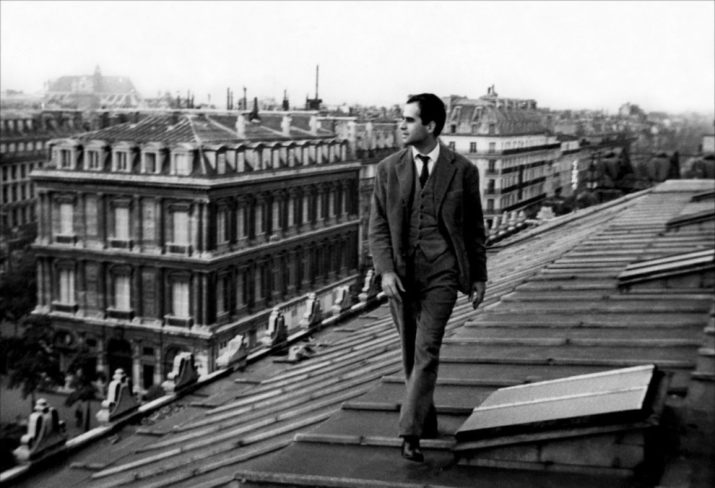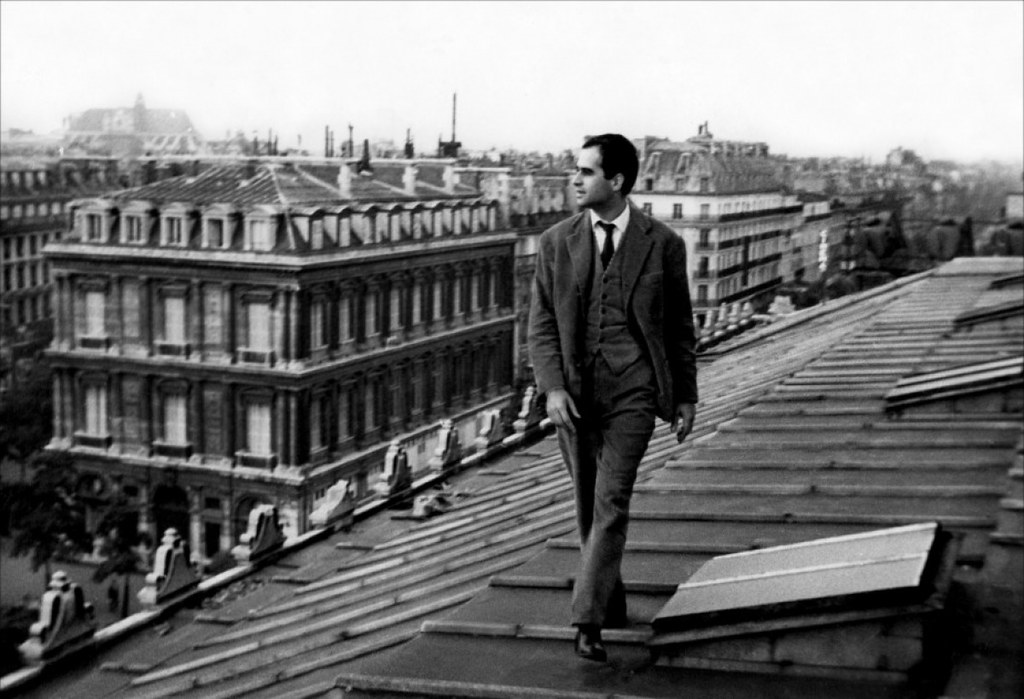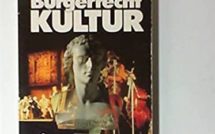

This is part of our special feature on European Culture and the Moving Image.
In their introduction to Global Art Cinema, Rosalind Galt and Karl Schoonover explain that the category of “art cinema” is impure by definition. It encompasses a broad range of “feature-length narrative films at the margins of mainstream cinema, located somewhere between fully experimental films and overtly commercial products” (2010 6), but any attempt to narrow down the category exposes complications. Galt and Schoonover mention a few ambivalences: in principle, art cinema has no star actors, yet there are several (think of Juliette Binoche, Tilda Swinton, Mads Mikkelsen, Toni Servillo); art cinema is not independent, but also subjected to industrial forces; a popular film in the home country can be so eccentric to foreign eyes that it is acknowledged as an art film when exhibited abroad.
Traditionally, art cinema has been used as a term of endearment to pit European cinema as the “good” object against Hollywood as the commercial giant. However, given the increased visibility of prolific filmmakers from Taiwan to Argentine since the 1980s, when the film festival circuit rapidly expanded, European cinema can no longer insist on its special status as standard-bearer of film aesthetics. Moreover, (ongoing) rediscoveries of hidden gems from non-Western countries in earlier decades implicated that art cinema was in fact always-already “global.” Despite these tendencies that downplay the Eurocentric connotations of art cinema, the category has kept on running the risk, Galt and Schoonover assert, that it is taken as apolitical due to its emphasis on aesthetics, which is the main reason why several critics disqualify art cinema as retrograde and elitist. The main thrust of the editors and contributors of Global Art Cinema was to remind scholars to be keen on the political and/or ethical dimensions of art cinema, regardless of its origin.
In the vein of their call, this article aims at an ethical reading of a particular strand of European art cinema, prompted by a minor point in the essay of Galt and Schoonover. They note that art cinema “constitutes a peculiarly impure spectator,” for the viewer is often “asked to be both intellectually engaged and emotionally affected” (2010 8). This article intends to reflect upon this hybrid spectatorship by focussing upon what I dub “code unknown” cinema, which manifests itself more explicitly in Europe than outside the continent. It concerns a type of non-feelgood film that is too uncompromising to raise much enthusiasm among a general (arthouse) public, because it refuses to construct a secure position for its viewers. Whereas the great majority is frustrated by this type, I would like to argue that the absence of a clear reading guide is nonetheless valuable from an ethical perspective. “Code unknown” cinema addresses a form of resistance which is a most welcome—and cinephilic—counterpoint to the incessant flux of images in the media-savvy world of this time and age.
Ironic distance
In order to give contours to “code unknown” cinema, let me linger by comparison over the textual address in some of the prize-winning titles of the European Award for Best Film in recent years. In several of these films, which had their international premiere at prestigious festivals, the protagonist displays an overtly ironic attitude. Think of Jep Gambardella’s jaded stance in La grande bellezza (The Great Beauty, Paolo Sorrentino 2013), when he voices his contempt for both Roman high society and modern performance art, or of the retired father in Toni Erdmann (Maren Ade 2016), whose hilarious pranks unsettle his career-oriented daughter. The protagonist can also fall victim to dramatic irony, as befalls the chief curator in The Square (Ruben Östlund 2017), who is forced to step down because his obsession with being pickpocketed runs contrary (as he belatedly realizes) to the value of empathy, the subject of an upcoming exhibition.[1]
Granted, these films are intellectually engaging somehow, in the sense that they offer the viewer food for thought on a variety of themes—nostalgia, corporate business, modern art—but the common denominator of these celebrated pictures is, as I hope to suggest, that they enable viewers to enjoy the films from a certain ironic distance. The characters in each of these titles are confronted with uncomfortable situations, but there is a reassuring buffer for the viewers. The ironic distance is clearly mediated: by Jep’s world-weary attitude and disdainful look at the “great ugliness” of modern life; by the father’s disguise as Toni Erdmann, including a weird wig and false teeth; by the curator’s too frenetic attempts to get his phone back. These gestures ensure that there is sufficient space for us to watch most of the scenes with a bit of malicious delight, and no matter how different these films are, what unites them is that the ironies are all legible. The ironic tone facilitates that we can put ourselves in the shoes of protagonists fairly smoothly, but at the same time, we can snigger at their vicissitudes, which guarantees we can maintain a cynical, but safe distance from them.
Unreadability
I have no quibbles with these films of ironic distance, which often benefit from word-of-mouth buzz among an arthouse public, but I have greater affinity with the unreadable underdogs in European cinema. Here, I consider Jacques Rivette’s nouvelle vague debut feature Paris nous appartient (1961) to be a significant forerunner.[2] In this film, the theatre director Gérard Lenz has set himself the task to perform Shakespeare’s “unplayable” Pericles. He realizes that the play is shreds and patches, but he has the impression that Pericles conceals a still unexplored coherence. His search for this coherence remains incomplete, for the film only presents the play’s rehearsals; we never see an actual staging for an audience. Gérard’s characterization of Shakespeare’s text parallels his belief that the world is chaotic, but not absurd; there is a purpose but it escapes us. As a consequence, Gérard, as well as his friends, think that their surroundings are a façade for a universe underneath. They are haunted by the premonition that they are mere paeans in a bigger scheme.
Their suppositions are the background for a plot, structured around rumours about a tremendous conspiracy: what if the Spanish guitar player Juan has not committed suicide, but has been “helped” to die, because he knew too much? Gérard’s later death also remains shrouded in mystery, and thus the events in Paris nous appartient take on a “double significance,” as Douglas Morrey observes (2012 45). They could be merely unremarkable and coincidental, but for all we know they can also be clues to some sinister intrigue. One is consistently denied confirmation whether some conspiracy actually exists; a clear dénouement is lacking.
Rivette’s film is devoid of a clear reading guide to orient us. Is it satirical? Is it a dark foretelling? Or is it like Gérard’s interpretation of Pericles: the search for coherence will probably remain unfinished business. Paris nous appartient has left a legacy in the form of films whose codes are likewise unknown, and the phrase I use here is to be taken as a nod to Michael Haneke’s Code Inconnu (2000).[3] Each scene in Haneke’s film is an uninterrupted take, followed by a few seconds of a black screen before we move on to the next scene. We can understand the unfolding of each disparate fragment, but we are in disarray about how to read the connection between the scenes, despite the presence of the same characters in many of the sections: Are the scenes presented in chronological order or not? Are we supposed to construct causal relations between them? Code Inconnu is set up to be a challenge for the viewer: Can you crack the code of the film? Given that many scenes depict mutual misunderstanding among the characters, the film slyly suggests that the challenge will defeat the viewer. Significantly, at the beginning of Code Inconnu, mute children play a game of charades, but no one can correctly guess what the girl’s mimed performance is in fact about. At the close of the film, a boy engages in a similar performance before the camera, meant for us, but no solution is given.
Code Inconnu shares a fundamental unreadability with Paris nous appartient, but Haneke’s film also moves one step beyond. To illustrate the emotional affect of Code Inconnu, I will refer to the episode in the Parisian subway. The camera is positioned half-way through the compartment and at the back, an adolescent addresses Anne in a brutal manner. Because she does not respond, he accuses her of arrogance, claiming that she apparently refuses to talk to him, because he is an Arab. Anne is fed up with his behavior and seeks a vacant seat, this time close to the camera. The adolescent continues to bother her, however, and only after he spits her in the face, does an Arab adult interfere. Ultimately, the brutal guy leaves the subway, whereupon Anne is moved to tears. This scene is so effective because the camera only registers the incident from a fixed position; there is neither a zoom, nor a cut. As viewers, we are thus interpellated as the silent majority who refuse to come to the rescue of an arbitrary passenger. It is almost impossible to watch this scene without feeling slightly ashamed. The scene makes an ethical demand upon viewers: who would take action? Intervention is required in such a situation, but the coldly registering camera is a displeasing sign of (our) reluctance and lack of courage.
“Code unknown” cinema is discomforting rather than didactic, and provocation never seems far off.[4] A crowning achievement in this regard is the baffling scene in Rester Vertical (Staying Vertical, Alain Guiraudie, 2016), in which the protagonist starts barebacking an old, homophobic man who has just taken a potion to commit euthanasia upon himself. On the one hand, the film is structurally reminiscent of Paris nous appartient. Practically everything in Rester Vertical, as Owen Gleiberman mentions correctly, emerges out of nowhere. In other words, a clear cause-and-effect logic is missing, but there could be an undetected coherence nonetheless. On the other hand, the scene at hand makes us wonder: Is it a downright provocation, meant to shock the viewer, or is it to be taken as a scene of “benediction,” the one “act of kindness” in a film “that defies common sense in a way that audiences will not take kindly to” (Gleiberman 2016)? I guess it could be both.
To avoid misunderstanding, this type of “code unknown” cinema does not necessarily have to be (morally or sexually) excessive to create discomfort. Being familiar with Ulrich Seidl’s fictional work, I was expecting his Austrian-Danish documentary Safari (2016) to poke fun at the sort of tourists who shoot wild animals for pleasure. It opens with portly Germans who have hidden themselves in a wooden shed with their cans of beer, waiting for their prey to pass by. It is less obvious in later scenes that the attitude is ironic. Some takes are so lengthy that we cannot help but identify with the hunters; we are invited to rejoice with them in the killing of a giraffe. The tone of Safari becoming increasingly more difficult to determine. Seidl defies the viewers: You expected an ironic film? Eat this! In short, Safari is provocatively “normal” because Seidl seems unexpectedly empathetic towards the pleasure-hunters. Is he seriously interested in them, or is the documentary supposed to annoy us, viewers, because we had hoped he would turn the predators into objects of ridicule?
Beginning
I have provided this brief enumeration of unreadable pictures as a stepping stone to discuss the Georgian-French production Dasatskisi (Beginning, Dea Kulumbegashvili, 2020). Though it was near the bottom in the rankings of the public poll of the International Film Festival Rotterdam where I watched it, I myself was stunned by it. The film was not particularly innovative, and for every significant aspect I could recall a film that had done the same thing, but somehow it all came together. The Mexican filmmaker Carlos Reygadas was involved as executive producer, and Beginning has the breathtaking, long-take style of his films. The camera remains static most of the time, even when a church is set on fire by someone off-screen and panic erupts among the churchgoers. Another striking device: one shot shows an out-of-focus background, then someone enters the frame in the foreground in sharp focus. Or the camera shows us a group of children, but consistently the youngster who is reading from the Bible is off-screen. An exemplary instance of the film’s slow pace is the medium shot, halfway through the film, showing Yana, the protagonist, lying in the grass, her eyes closed. It lasts more than five minutes, and even her seven-year old son Giorgi presumes she might be dead.
Yana is married to David, a preacher for the Jehovah’s Witnesses. Her main role is to prepare young children, her own Giorgi among them, for baptism. David had promised her that she could pursue an acting career, but now she is once again kept from following her wishes, this time by his determination to build a new Prayer House after their church has been burnt down. She complains that “life goes on as if I weren’t there. It is as if I am waiting for something to start, or to end. … Something’s wrong with me. I look into a mirror and a stranger looks back.”
While David is away, Yana is paid a visit by Alex, a charismatic detective from Tbilisi who had advised the Jehovah’s Witnesses to withdraw their case. Alex speaks in a calm voice, but sitting on the couch in her home, he suddenly starts to ask impertinent questions: “Does your husband fuck you on the couch? Does he prefer blow jobs or fucking in the ass?” Alex will only leave on the condition that she answer truthfully. He orders her to sit next to him, puts her hand in his trousers, and then suddenly says that he is sorry he has to go—quite similar to a scene from Wild at Heart (David Lynch 1990). The next day, she goes to the police station to request information about the detective from Tbilisi, but no one knows him. From that moment onwards, we are on the alert that he might show up, again, from the off-screen field.
One evening, the doorbell rings. Yana goes to look, but nobody is there. She continues her search in a lengthy extreme long shot, traversing a small creek, going to and fro. At one point, she is at the right side of the frame and stares off-screen with a frightened look. At that moment, Alex surprises her from behind and rapes her on the spot. The rape itself is presented from afar, and it clearly recalls for me the infamous Irréversible (Irreversible) (Gaspar Noé, 2002): a static camera registers two tiny bodies in the distance. Moreover, while Yana is being raped, we hear the continuous sound of the creek’s flowing water, which brings to memory the scene in Ryan’s Daughter (David Lean 1970) in which Rosy enjoys her illicit affair with Major Doryan. In this classical drama, the couple’s moans and groans are drowned out by the sounds of the wind and the waterfall. As Slavoj Žižek has argued, such sounds function as the “phantasmic screen” to repress the embarrassment provoked by the sexual ecstasy (1997 182). One can then say that “Irréversible meets Ryan’s Daughter” in this scene from Beginning, and due to this incompatibility of “hard-core art” and classic drama, the film raises a number of questions in its own narrative: Is Yana traumatized by the event? Or does she perhaps enjoy Alex’s assault as an escape from the routines imposed on her in her life with her selfish husband?
Significantly, Yana does neither press charges against Alex, nor does she tell David about the rape. To her astonishment, she suddenly hears Alex’s voice, off-screen. The fake detective had sent a recording of his conversation with Yana on the couch to David’s phone. David is furious that she has kept this encounter silent, but later says: “I want to forgive you.” Yana only replies: “You won’t be able to.” After Giorgi’s baptism, she prepares a poisoned drink for her son, then tells her husband in passing: “I killed him.”
It is tempting to consider Biblical references if we seek to solve the film’s enigmas: the story of Abraham’s near-sacrifice of Isaac seems helpful in making sense of Giorgi’s death; perhaps Giorgi represented, for his mother, the “angel of light,” which as Yana taught the children is one of Satan’s guises; the phrase “ashes to ashes” seems applicable for the epilogue in which we see Alex crumbling into dust on cobblestones. The gestures in Kulumbegashvili’s film are so radical, however, that any attempt to interpret its events along scriptural lines will fall short. The tone of Beginning is impossible to determine: Is it serious art cinema? Is it ironic? It is both and neither, I guess, and it left me wondering why I have been so attracted to these kinds of films—by Rivette, Haneke, Guirardie, Seidl, and now Kulumbegashvili.
In our current moment, we are visually oversaturated, from Instagram posts to online conspiracy videos, from television series to films recommended on the basis of algorithms. They invariably address us with an appeal to “See Me, Believe Me, Like Me.” Rather than issuing the command “Consume Me,” “code unknown’ films tend to “Confuse Me.” Confusion, however, has become the best condition for contemplation in the contemporary maelstrom of images. “Code unknown” cinema functions like a jamming signal: it is unruly and stubborn, and because any reading guide to aid our understanding is conspicuously absent, they require us to pause: How do we commit ourselves to films that have no integrated moral compass? For me, such films—as marginal and unpopular as they are—form a site of resistance, located beyond common sense, beyond empathy, beyond irony. Due to their indeterminacy and lack of any clear moral framework, they set viewers adrift. Insofar people are dismayed by these films, it is because they disable viewers to make (instant) judgements. Therefore, code unknown cinema is intellectually engaging and emotionally affective—squared.
Peter Verstraten is Assistant Professor of Film and Literary Studies at Leiden University. His publications include Film Narratology (2009), Humour and Irony in Dutch Post-war Fiction Film (2016), and Dutch Post-war Fiction Film through a Lens of Psychoanalysis. Together with directors of photography Richard van Oosterhout and Maarten van Rossem, he co-edited Shooting Time (2012), a volume on cinematography. He is a regular contributor to Senses of Cinema.
References
Galt, Rosalind and Karl Schoonover. ‘Introduction: The Impurity of Art Cinema.’ Global Art Cinema: New Theories and Histories. Cary, NC: Oxford University Press, 2010: 3-27.
Gleiberman, Owen. ‘Cannes Film Review: Staying Vertical.’ Variety, 12 May 2016.
Morrey, Douglas. ‘To Describe a Labyrinth: Dialectics in Jacques Rivette’s Film Theory and Film Practice.’ Film-Philosophy 16, 1 (2012): 30-54.
Žižek, Slavoj. The Plague of Fantasies. London, New York: Verso, 1997.
[1] Another good example is Yorgos Lanthimos’ The Favourite (2018), with its many wide-angle lens shots. This award-winning picture is an ironic take on the genre of the British heritage drama, stylistically exaggerating the devices of the Merchant-Ivory productions, such as Howard’s End (1992).
[2] I would like to entertain the hypothesis that François Truffaut’s nouvelle vague debut feature Les quatre cents coups (The 400 Blows, 1959) is an exemplary precursor to the lineage of an arthouse cinema of ‘ironic distance.’ The film uses a great variety of techniques: swish pans, freeze frames, zoom shots, high-angle shots. The story is about a 14-year-old boy who has a deadpan face throughout, even when he undergoes the sometimes unjust punishments by laughably over-fussy adults. He makes up an unfortunate excuse for his absence at school (‘my mother died’) and commits some petty thefts, but ironically he is caught not by stealing a typewriter but by bringing it back. Moreover, he visits the cinema with his parents, but the father does not think Paris nous appartient an amusing film. Rivette’s film was completed in 1959, but it was only released two years later.
[3] Haneke is an Austrian filmmaker, but Code Inconnu was produced by French companies, German television and Romanian Culture Ministry.
[4] Though I want to emphasize that the sometimes harrowing experiences offered by ‘code unknown’ cinema is not restricted to Europe, it seems to manifest itself more abundantly in the continent that also produced Pier Paolo Pasolini’s Salò (1975) and Andrzej Zulawski’s Possession (1981).




